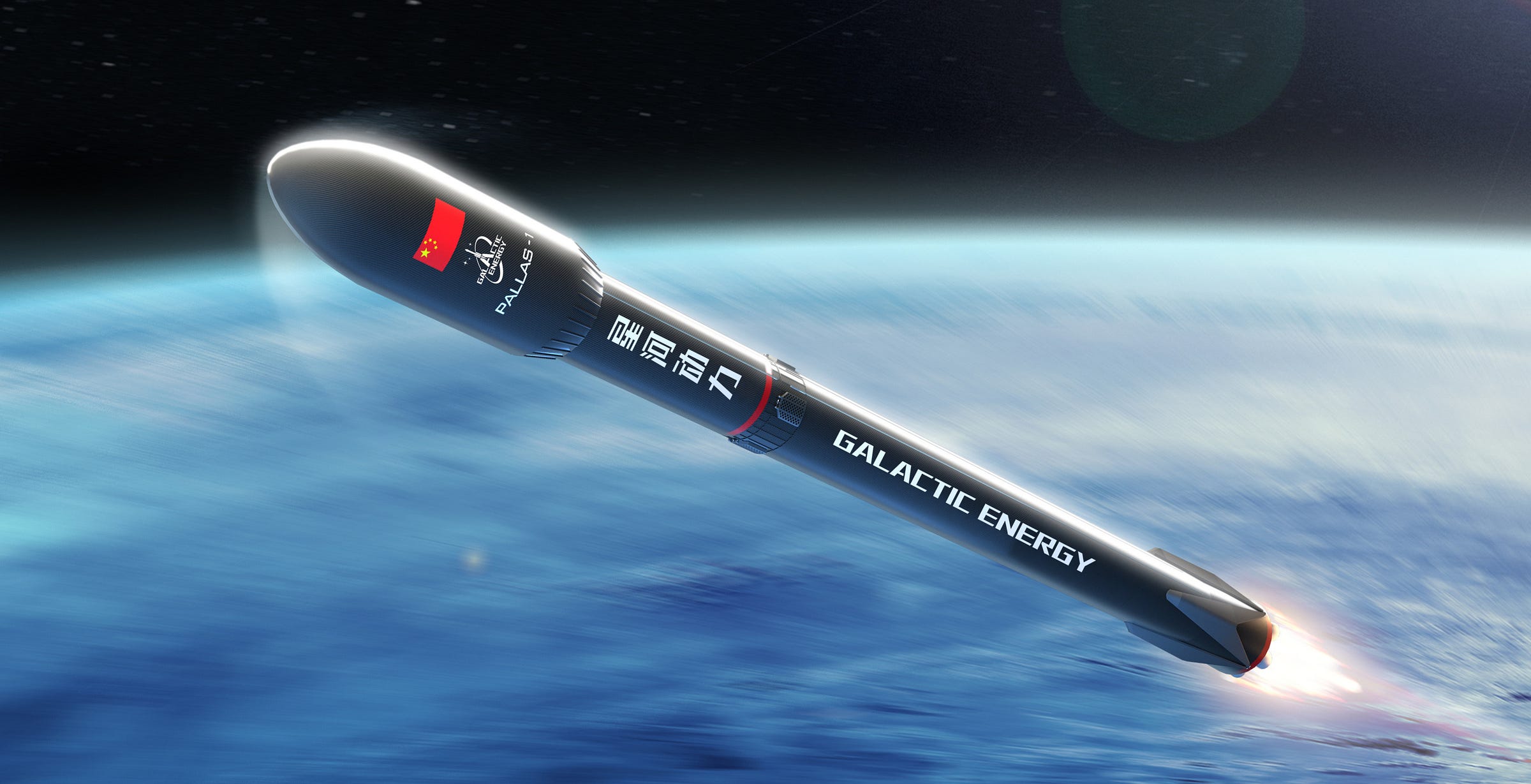LandSpace, iSpace, Galactic Energy Reaffirm 2025 Debut Flights
China's first reusable rockets are planned to fly in the next few months.
China’s first reusable launch vehicle is set to take flight this year, possibly as soon as next month. Efforts to fly a reusable rocket are not limited to one company, with a handful planning to operate them as a few move close to launch.
First, from Galactic Energy’s launch vehicle production facility in Chizhou (池州市), Anhui Province (安徽), China Central Television aired a report on June 14th regarding the company’s efforts in developing the Pallas-1 two-stage partially reusable launch vehicle, planned to carry 8,000 kilograms to low Earth orbit, and preparing it for a debut flight.
In the report, it is quickly noted that teams are working on bringing together propellant tanks and an outfitted engine section to create the rocket’s first-stage booster while a second-stage is ready with an engine installed, minus its nozzle extension for vacuum-optimized burns.


Additionally, the reporter was informed that fairing separation, extensive engine tests, and technology verification tests for reuse have taken place. Through the report, Galactic Energy shared that Pallas-1’s first-stage boosters are planned to be reflown up to twenty-five times.
With the report, it was announced that Pallas-1 is planned to fly its debut flight toward the end of the year following static fire tests. At the beginning of 2024, Galactic Energy and Hainan International Commercial Aerospace Launch Co Ltd (海南国际商业航天发射有限公司) agreed to perform the rockets debut flight from the Wenchang Commercial Space Launch Site.
Meanwhile, iSpace’s Chairman Peng Xiaobo (彭小波) took part in an interview on June 13th where he provided some updates on his company’s Hyperbola-3 launch vehicle, also two-stage and partially reusable, but carrying up to 13,600 kilograms to low Earth orbit when expendable or 8,600 kilograms when reused.
The interview with Peng Xiaobo hastily reiterated that Hyperbola-3 is set to perform its maiden flight before the end of the year, previously known to be December with a first-stage booster splashdown. Moreover, it was restated that June 2026 is a target for a reflight of a first-stage.
In support of having a Hyperbola-3 booster reflown twelve months from now, iSpace is building out an extensive engine test facility to verify that the rocket’s engines are suitable for flight. Related to the first launch of the rocket, cryogenic proof testing of a propellant tank, which was made in January, was passed in April of this year, as production capacity for the rocket is being expanded to build twenty per year.
Lastly, LandSpace has also recently reiterated that they are planning to fly Zhuque-3 in the coming months (maybe as soon as July) for the first time, which may see a first-stage booster landing, as well as a first-stage reflight next year. Back in February, the company shared that they were preparing to fly three Zhuque-3’s this year, with a second first-stage making good progress, along with twelve flights in 2026 if all goes as planned this year.
Ahead of the debut flight, hardware for Zhuque-3 has been extensively tested, including over 130,000 seconds of engine firings as well as a 350-meter and 10,002-meter hop test.
For the flights this year, Zhuque-3 could fly in a configuration unable to lift 21,300 kilograms. Instead, the first few vehicles may be limited to lifting no more than 11,800 kilograms when expended or 8,000 kilograms with a downrange landing, according to a leaked customer guide. The first handful of vehicles may also be shorter, by around ten meters, and almost 100,000 kilograms lighter, while using the less powerful TQ-12A engines for the first-stage and the TQ-15A engine for the second-stage. As such, only downrange landings may be possible until the vehicle is upgraded in later missions to use the TQ-12B.
Eventually, LandSpace would like to fly one Zhuque-3 each week, while within three years being able to offer launch services at a cost of 549 million Renminbi (76.4 million United States Dollars, as of June 16th) per flight, before it drops further to 54.9 million Renminbi (7.64 million United States Dollars).
Alongside the companies above, other reusable rockets debut flights this year could include Deep Blue Aerospace’s Nebula-1, Space Pioneer’s Tianlong-3, OrienSpace’s Gravity-2, Cosmoleap’s Leap, and CAS Space’s Kinetica-2 (although reuse will be implemented a few years later).



